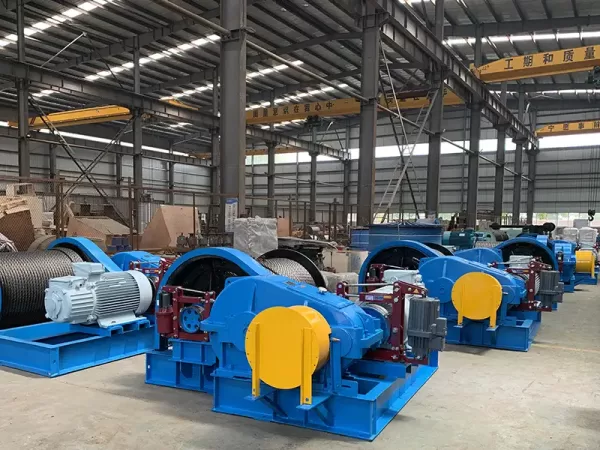Electric winches are invaluable tools for off-roading, towing, lifting, and recovery tasks. Whether you’re an off-road enthusiast, a boater, or someone involved in heavy-duty lifting on construction sites, having the right winch can make all the difference in ensuring that your operations are safe, efficient, and hassle-free. With a variety of winch models on the market, choosing the best one for your specific needs can be a daunting task. This guide aims to simplify the process, providing you with essential factors to consider when selecting the perfect electric winch.
Understanding the Basics of Electric Winches
Before diving into the key factors to consider, it’s essential to understand the basic components of an electric winch:
-
Motor: The motor powers the winch, determining how much weight it can pull and how quickly it can perform the task.
-
Cable or Rope: Winches come with either steel cables or synthetic ropes. Steel cables are more durable and resistant to heat but can be heavier and more difficult to handle. Synthetic ropes are lighter, easier to manage, and less prone to fraying, but they may be more susceptible to UV damage.
-
Drum: The drum houses the cable or rope. Its size affects how much cable can be wound and how quickly the winch can be used.
-
Control System: Most winches come with a remote control (either wired or wireless) that allows you to operate the winch safely from a distance.
1. Determine Your Vehicle’s Weight and the Required Pulling Capacity
One of the first things you need to consider when choosing an electric winch is the pulling capacity, which should be based on the weight of your vehicle or the load you plan to pull. In general, it’s recommended to choose a winch with a pulling capacity that’s at least 1.5 times the weight of the heaviest vehicle or object you plan to pull. This will ensure that the winch has enough power to handle the load without strain.
For example, if your vehicle weighs 5,000 pounds, you should choose a winch with a capacity of at least 7,500 pounds. This gives you extra margin in case you encounter particularly tough situations, like being stuck in thick mud or snow.
Tip: Always opt for a winch with a slightly higher pulling capacity than what you think you’ll need. It’s better to have extra power than to be under-equipped in an emergency situation.
2. Consider the Type of Rope or Cable
electric winch typically come with two types of line materials: steel cable or synthetic rope. The material you choose will depend on your intended use and personal preference.
-
Steel Cable:
-
Pros: Strong and durable, resistant to wear and tear, and ideal for heavy-duty applications.
-
Cons: Heavier, difficult to handle, can cause injuries if snapped, and is susceptible to rust and corrosion when exposed to moisture.
-
Best for: Marine and industrial applications or situations where strength and durability are more important than weight.
-
-
Synthetic Rope:
-
Pros: Lighter and easier to handle, more flexible, doesn’t rust, and safer in the event of a snap (it won’t whip back at high speed like steel cable).
-
Cons: More expensive, susceptible to UV damage, can be damaged by abrasion.
-
Best for: Off-roading, lighter towing, and recreational use where weight is a factor and safety is important.
-
Consider your specific use case. For off-roading and recreational use, synthetic ropes tend to be the better choice for their ease of use, while steel cables are ideal for more rugged, heavy-duty environments.
3. Power Source and Motor Type
The motor type and power source of the winch are crucial to its performance. Most electric winches are powered by 12-volt DC (direct current) motors, which are powered through your vehicle’s battery. Some winches come with 24-volt motors, which are more powerful but are typically used in larger vehicles and heavier-duty tasks.
There are two primary motor types:
-
Permanent Magnet Motor:
-
Pros: These motors are compact, efficient, and less expensive.
-
Cons: They offer less power and are less durable compared to series-wound motors.
-
Best for: Light to medium-duty applications where the winch doesn’t have to work under extreme stress.
-
-
Series-Wound Motor:
-
Pros: These motors are more powerful, durable, and can handle heavier loads.
-
Cons: They are larger and tend to be more expensive.
-
Best for: Heavy-duty tasks like off-roading with larger vehicles or towing heavy loads.
-
If you’re planning on using your winch for heavy-duty tasks or in situations that require significant power, it’s recommended to go with a series-wound motor.
4. Control Systems: Wired vs. Wireless
Modern winches come with two types of control systems: wired and wireless.
-
Wired Remote:
-
Pros: Reliable, low maintenance, and typically less expensive.
-
Cons: Limits your mobility since you have to remain close to the winch while operating it.
-
Best for: Simple tasks or when you don’t mind being close to the winch.
-
-
Wireless Remote:
-
Pros: Provides greater flexibility, allowing you to operate the winch from a safe distance. Ideal for situations where you need to move around the vehicle.
-
Cons: Slightly more expensive and may require battery changes or charging.
-
Best for: Off-roading and recovery scenarios, where you need to be able to move around the vehicle or stay out of harm’s way.
-
If you’re using the winch in off-road recovery situations or need to operate it remotely in dangerous or hard-to-reach areas, a wireless remote will provide additional safety and convenience.
5. Consider the Winch’s Mounting and Installation
Another important factor when selecting an electric winch is the ease of mounting and installation. Many winches are designed to fit specific vehicle models and mounting systems, so it’s essential to choose a winch that fits your vehicle and your intended use.
-
Winch Mounts: You may need to purchase a mounting plate or a mounting bracket specific to your vehicle. Some off-road vehicles, like trucks and SUVs, come with winch-ready bumpers that make installation easier.
-
Installation: If you’re not confident about installing the winch yourself, many manufacturers offer professional installation services or instructions on how to mount and wire the winch safely.
6. Weatherproofing and Durability
If you plan to use your winch in harsh environments—whether it’s muddy trails, deep water crossings, or salty sea air—it’s essential to select a winch that’s built to withstand these conditions.
-
Waterproofing: Check the winch’s IP (Ingress Protection) rating. A higher IP rating indicates better protection against water and dust. For example, a rating of IP67 or IP68 means the winch is sealed against water immersion and dust ingress.
-
Durability: Look for winches that are built with corrosion-resistant materials (e.g., stainless steel) and rust-resistant coatings, especially if you plan to use the winch in marine or coastal environments.
7. Budget and Warranty
While quality should always come first, your budget will play a significant role in your decision-making. Higher-capacity winches with advanced features will naturally be more expensive. However, keep in mind that a more affordable winch may not always provide the same level of durability, performance, and safety features as a higher-end model.
Warranty: Many winches come with warranties, typically ranging from 1-5 years. It’s essential to read and understand the warranty terms, as this can protect your investment in case something goes wrong with the winch.
Conclusion
Choosing the right electric winch depends on your specific needs, the type of terrain you’ll be navigating, and the weight of the vehicle or objects you intend to tow or lift. By considering factors like the winch’s pulling capacity, rope type, motor power, control system, and durability, you can select a winch that offers reliable performance and safety.
Whether you’re a recreational off-roader or someone involved in heavy lifting on the job site, the right winch can make all the difference in ensuring smooth, hassle-free operation. Take the time to assess your requirements, and with the proper winch in hand, you’ll be ready for whatever challenges come your way.




